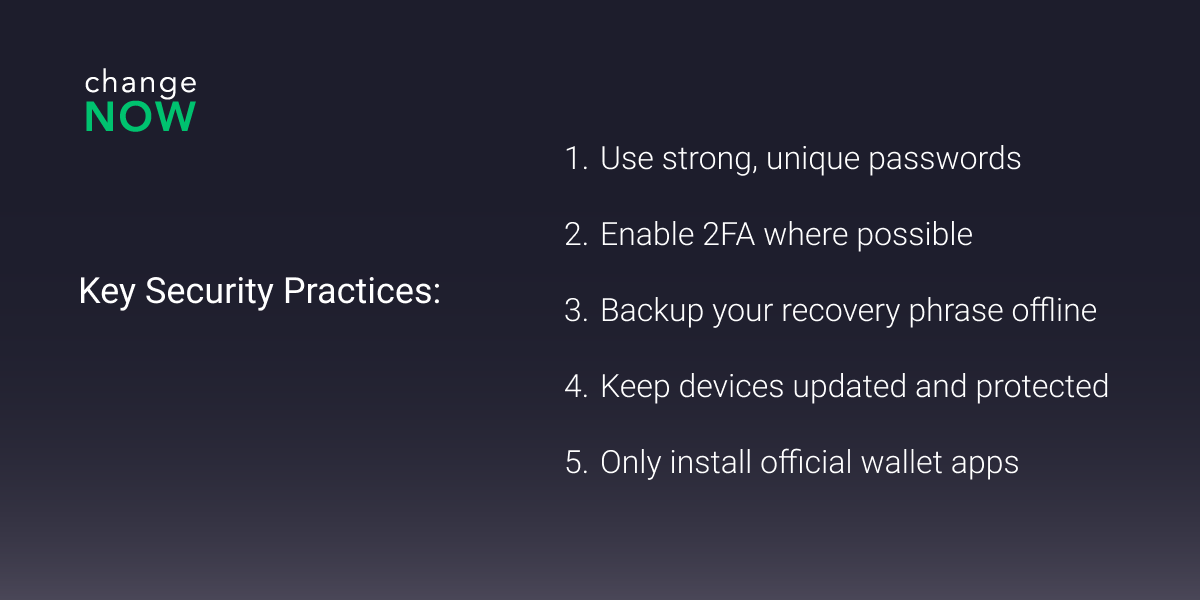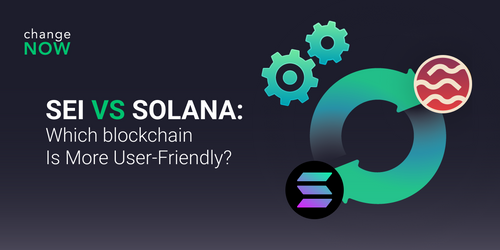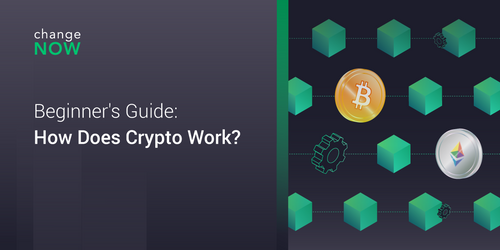How to Choose the Right Crypto Wallet

Key Takeaways
- Hot wallets are used for frequent transfers and Web3. Cold wallets are better for the funds you want to keep offline and untouched for a while.
- Choose a wallet that matches how you actually use crypto, the networks you need, whether you’re into staking, NFTs, or just trying out new platforms.
- Your security depends on the choices you make such as what you approve, what you download and how carefully you store your recovery phrase.
What Crypto Wallet Should You Choose?
Your first real step in crypto is picking the wallet that will manage your digital access. It’s not the coins the wallet holds, it’s the keys that unlock your place on the blockchain. Private keys define who can move your assets on the blockchain, and a wallet simply keeps them safe and accessible to you.
According to Money, roughly 24% of adults in key regions already hold digital assets, and the number keeps climbing. That growth raises the bar on wallet security and responsibility.
Custodial vs Non-Custodial: Who Holds the Keys?
With a custodial wallet, a company is holding those keys for you. It feels simple: you log in, you see your balance, you buy and sell with a couple of taps. If you forget your password or switch devices, support can help you get back in. The trade-off is that your assets ultimately depend on that company. When a platform blocks withdrawals or runs into trouble, you don’t get to decide what happens to your funds.
A non-custodial wallet puts the keys entirely in your hands. Nobody can lock your account, reverse a transaction, or limit what you do with your own funds. That’s the pure version of crypto ownership. Of course, the flip side is — when you lose your recovery phrase or download the wrong app, there’s no hotline to call because the responsibility is yours alone.
Many people end up with a mix of wallets, a custodial for trading and quick moves, and a non-custodial to store what they truly want to protect long-term.
Hot Wallets vs Cold Wallets
Wallets also differ in whether they are online or largely offline. Hot wallets connect to the web for fast transactions. Cold wallets work mostly offline for stronger security.
Breakdown
| Feature | Hot Wallets (Online) | Cold Wallets (Offline) |
|---|---|---|
| Internet connection | Always connected | Offline by default (connects only to sign) |
| Ease & speed | Very high | Lower (device, cable, or transfer needed) |
| Security exposure | Higher risk of remote hacking or phishing | Much lower remote-risk; more physical/operational risk |
| Best for | Day-to-day use, frequent transactions, DeFi, NFTs | Long-term holdings, large value storage |
| Typical examples | Mobile apps, web wallets | Hardware wallets, paper wallets |
Key Criteria When Choosing a Wallet
The best way to compare wallets is to look at three things — how safe they are, what they can do, and how simple they are to use. When one side falls short, your wallet either becomes unsafe or just plain inconvenient.
Security always comes first. A wallet should keep your private keys protected and reduce the risk of theft or loss in every way possible. You should pay attention to:
- strong encryption of local key storage
- independent security audits and a proven track record
- full user control over private keys (non-custodial architecture)
- clear and reliable backup/recovery systems (seed phrases, hardware support, etc.)
As crypto adoption grows, this becomes even more important. TradingView reports that active wallets storing stablecoins increased by approximately 53% in one year, demonstrating that more value is being held in crypto wallets than ever before.
Functionality is the next factor. Wallets are no longer just passive storage apps. Wallets have evolved into full-featured tools. You can trade tokens, earn rewards, and connect to blockchain apps without leaving the interface. If you plan to do more than just hold your assets, look for one that works across several networks, supports the things you care about (whether that’s NFTs, staking, or DeFi), and connects smoothly to the wider Web3 world.
User Experience (UX) matters more than most people admit. A wallet should make transactions feel simple and intuitive rather than like debugging code. It is essential to determine:
- clarity of the interface
- ease of navigation for both beginners and advanced users
- helpful guides or support if something goes wrong
- how easy it is to restore access on a new device.
Support & Ecosystem Maturity
This fourth criterion often gets overlooked, however it’s still crucial. The strength of the underlying ecosystem and support infrastructure affects your actual day-to-day safety and flexibility. Look for:
- Regular updates and patches from the wallet team (software that’s not maintained becomes a security risk).
- With an open-source foundation and clear documentation on GitHub, users can easily track development progress, version updates, and audits. This transparency builds confidence, allowing independent reviewers and the community to verify the wallet’s integrity.
- Compatibility with hardware wallets or trusted extensions if you want to scale security up.
- Active development of the wallet’s ecosystem: multiple integrations, network support, active user community. For example, auditing standards emphasize independent review and transparency in crypto-asset systems.
- Responsive customer support or community channels when you hit a snag — especially for newcomers using complex features.
Trusted Crypto Wallets for 2025
NOW Wallet is a mobile and desktop non-custodial wallet where you control your private keys. It supports over 1500 tokens across 70+ blockchains. The wallet works well both as a daily wallet for regular transfers and as a gateway to Web3 apps. No sign-ups just to store your coins. Install it, back up your recovery phrase, and you’re good to go.
It emphasizes privacy and ease of use, no KYC registration for basic features, full local key storage, and live chat support available 24/7. If you choose the Pro version of the Wallet, you unlock premium benefits like cashback on exchange transactions, AML address checks for added security, your own webpage to receive crypto and fiat payments, and unlimited crypto loans.
Also, it’s worth noting that NOW Wallet is about to launch GasFree Wallet. It allows users to transfer USDT on TRON with a fixed, transparent fee built directly into the wallet. This feature is designed to make everyday crypto transfers simpler, faster, and more predictable, so you only manage one asset: USDT.
Ledger is the gold standard for cold storage. Private keys are kept entirely offline inside a secure chip (“Secure Element”) and transactions are signed physically on the device. The Wallet supports thousands of coins and tokens (5,500+ across the ecosystem. Its ecosystem includes the hardware device and Ledger Wallet software. The hardware device like “The Ledger Nano X” or “Nano S Plus” is where your private keys are securely stored and where every transaction is physically confirmed. Ledger Wallet, on the other hand, serves as the interface or control panel for that device.
Through the app, you can view balances, send or receive crypto, install blockchain apps on your Ledger, manage NFTs, or connect to DeFi and dApps — but all sensitive operations (like signing a transaction) still happen on the hardware wallet itself.
Exodus is a non-custodial wallet available for desktop and mobile, with a user friendly user interface and a wide range of features. It supports over 50+ crypto assets , allows in-app swaps, and offers staking options.
The Exodus website mentions Web3 wallet support, a built-in NFT gallery/marketplace, and expanded hardware wallet compatibility.
It strikes a balance between cold storage devices and more lightweight wallet apps.
Coinbase Wallet is a self-custody option from a brand most crypto beginners already trust that supports thousands of assets including all ERC-20 tokens and assets on EVM-compatible chains like Avalanche C-Chain and Polygon. It’s built for smooth Web3 use: you can hold assets on networks like Ethereum and Solana, manage Bitcoin on mobile, and jump into apps through a browser extension without any hassle. Your keys are stored on your device, not with a central exchange.
Multi-chain & asset support: Manage crypto on Ethereum, Solana, and EVM-compatible chains. You can swap tokens directly inside the wallet across decentralized exchanges. The wallet includes a dApp browser for decentralized apps and supports NFT collection & management
Bitget Wallet is a non-custodial, multi-chain wallet that supports 130 mainnets and more than 1 million cryptocurrencies, a DApp browser, and complete portfolio management in one interface.
It is designed for self-custody: users hold their private keys, and the platform emphasizes security and autonomy. The About page states that the wallet is “designed to make crypto simple, seamless, and secure for everyone” and is backed by a US $300 million+ user protection fund.
Common Threats to Crypto Wallets
Crypto wallets aren’t just targets for hackers—they’re also tested daily by simple human mistakes. Below are the most frequent and damaging types of wallet threats today:
Phishing and Fake Wallet Apps Scammers often recreate popular wallet interfaces and post near-identical fakes online — they even show up in search results and app stores, so it’s easy to download the wrong one by accident. These counterfeits look almost identical to the originals and often appear in search results or app stores. Once a user enters their recovery phrase, the attackers instantly drain the account. According to a Datavisor report phishing remains one of the most common reasons people lose their crypto.
Clipboard Address Swaps. Malware that replaces a copied wallet address is another serious problem. When someone copies their address to receive a payment, the software changes it to the hacker’s version, often with similar characters to avoid suspicion. The user pastes it, sends the funds, and never sees them again. This method is known as an address-replacement or poisoning attack
Social Engineering and Fake Support Chats. A growing trend is impostors pretending to be “official support.” They contact users on social media or forums and ask for verification codes or seed phrases under the pretense of “helping recover access.” Once shared, the wallet is gone for good.
Key Security Practices
Most crypto losses happen because someone let their guard down. Follow these core practices to avoid preventable mistakes:

Conclusion
There is no universal solution when it comes to crypto wallets. The best choice comes down to how you handle your crypto day-to-day and how cautious you want to be with the funds you’re protecting.
Users who interact frequently with decentralized apps or move funds regularly benefit from the speed of hot wallets. Those looking to secure long-term holdings will achieve stronger protection through hardware devices or other offline methods.
In practice, a diversified setup is the most resilient. Seasoned holders typically maintain multiple wallets: one optimized for accessibility and another dedicated to safeguarding capital. It balances usability with robust asset protection.
As digital assets take on a larger role in modern finance, the choice of wallet becomes a critical security decision rather than a technical detail. You should know who holds the keys to your wallet account, how to restore control if you lose it, what kind of risks could make your assets vulnerable.
A well-chosen wallet which, supported by careful security habits, becomes a dependable base for managing and protecting your holdings in the evolving digital landscape.
Sources:
- Ledger. (2025). Supported crypto assets. From https://www.ledger.com/supported-crypto-assets/page/979
- Coinbase. (2025). Supported networks and assets for Coinbase Wallet. From https://help.coinbase.com/wallet/browser-extension/supported-networks-and-assets
- Bitget Wallet. (2025). Supported assets on Bitget Wallet. From https://web3.bitget.com/en/assets
- Money. (2025). Best crypto wallets of 2025. From https://money.com/best-crypto-wallets/
- TradingView. (2025). Stablecoin users grew 53% in one year: Report. From https://www.tradingview.com/news/cointelegraph:2daee2d56094b:0-stablecoin-users-grew-53-in-one-year-report/
- Crypto Consortium. (2025). Auditing standards for crypto-asset systems. From https://cryptoconsortium.org/standards-2/
- NOW Wallet. (2025). NOW Wallet official website. From https://walletnow.app/
- Exodus. (2025). Exodus Wallet official website. From https://www.exodus.com/
- Bitget Wallet. (2025). About Bitget Wallet. From https://web3.bitget.com/en/about
- Exodus. (2025). Which assets does Exodus support? From https://www.exodus.com/support/en/articles/8598611-which-assets-does-exodus-support#what.




